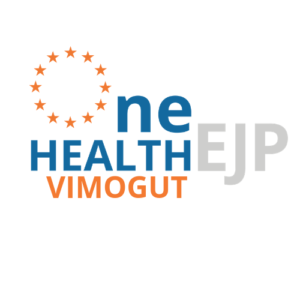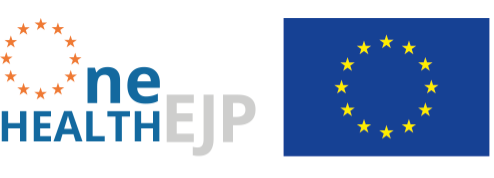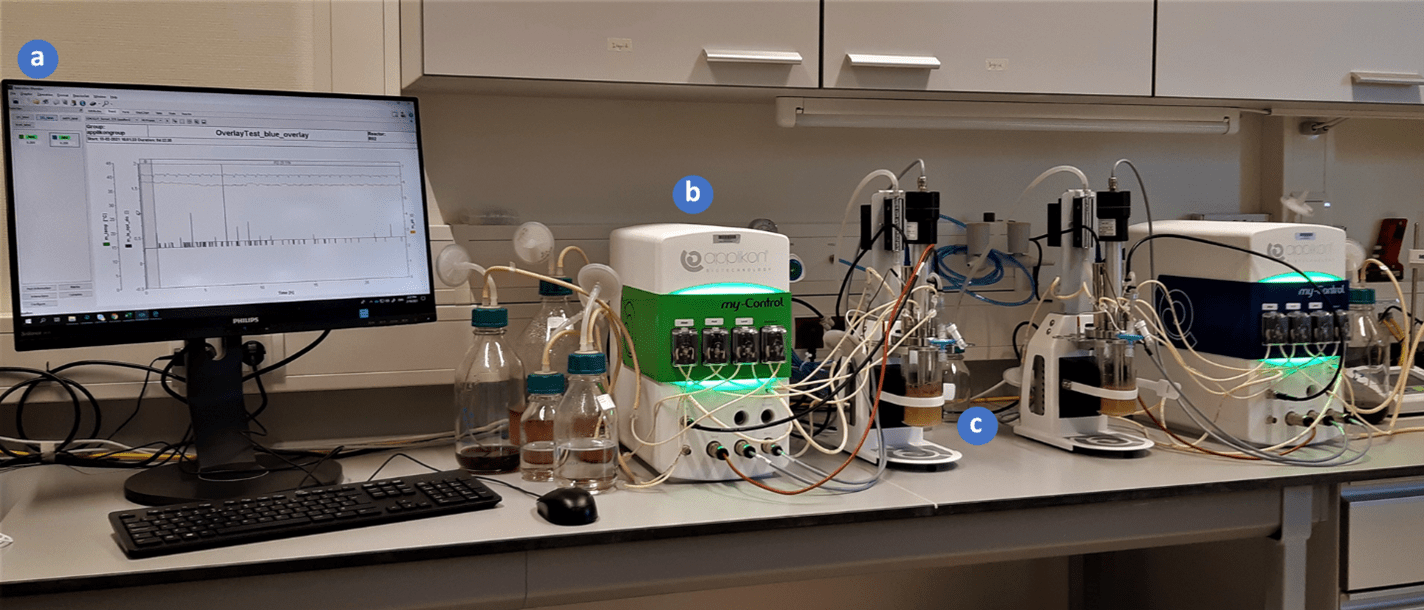Houtribweg 39, Lelystad, Flevoland, The Netherlands
Addlestone, England, United Kingdom
Droevendaalsesteeg 6708, Wageningen, Gelderland, The Netherlands

The Project #VIMOGUT
| Start: | August 2019 |
| Duration: | 4 years |
| Domain: | Antimicrobial Resistance |
| Members: | WBvR, WUR- the Netherlands, APHA- UK |
| Contact: | Dr Michael Brouwer (WUR) |
VIMOGUT: In vitro and in vivo analyses and modulation of the chicken gut microbiome to combat AMR
The world faces multiple health threats, and antimicrobial resistance (AMR) tops this list in humans and animals. From all antibiotic resistance mechanisms, extended spectrum beta-lactamases (ESBLs) are specifically relevant due to their ability to inactivate a large group of critically important antibiotics known as beta-lactams. ESBLs have emerged globally in livestock and have been observed primarily in the Enterobacteriaceae family, especially in Escherichia coli strains. Numerous studies suggest foodborne transmission of ESBLs from chicken meat to humans. However, the attribution of chickens or chicken meat as a source of ESBL E. coli to humans remains unclear.
E. coli is a ubiquitous early coloniser of the chicken’s gastrointestinal tract (GIT) and plays a crucial role as a reservoir of ESBLs. The chicken caeca are two small organs in the chicken’s GIT in which fermentation of nutrients occurs, for which they harbour complex and dynamic microbial communities. The caeca are located between the small and large intestines and have unique characteristics that make it a rich and favourable environment for bacteria to transfer multidrug resistance plasmids to each other.
Developing successful strategies to reduce the transfer of ESBL genes in broiler production is only possible by understanding the successional dynamics of the chicken caecal microbiota and the role of ESBL-producing bacteria therein. Although the successional dynamics of the caecal chicken microbiome have previously been investigated, no studies accounted for the effect of ESBL-E. coli colonisation on the chicken caecal microbiota development or vice versa. Moreover, no research is available yet on the effect of in vitro microbiota interventions (e.g. synbiotics) on the horizontal transmission of ESBL genes to the caecal microbiota.
Therefore, the aims of this PhD project are: to better understand the interactions between the chicken caecal microbiota and ESBL-E.coli during the broiler chicken lifespan and to establish a chicken caecal in vitro model to assess the effect of microbiota interventions such as probiotics, prebiotics and synbiotics on the horizontal transmission of ESBL plasmids.
The PhD project is divided into two components: In vivo and in vitro studies of the chicken caecal microbiota.
The main objective of the in vivo component is to study the dynamic processes of the developing caecal microbiota of commercial broiler chickens in relation to ESBL-E. coli colonisation.
The specific objectives of the in vivo studies are:
- To identify key differences in the caecal microbial community composition of ESBL-colonised and ESBL non-colonised broiler chickens.
- To determine whether there is a critical time window in the developing chicken caecal microbiome to implement suitable intervention strategies such as probiotics and prebiotics against ESBL-producing E. coli.
On the other hand, the main objective of the in vitro component is to study horizontal gene transfer dynamics in the in vitro chicken caecal microbiota after the inoculation of an ESBL E. coli and other microbiota interventions.
Project Outputs
Results
In vivo component:
In our first study, we assessed the role of ESBL-E.coli in the successional dynamics of the caecal microbiota in developing broilers. Our findings suggest that ESBL-E.coli is associated with mild but consistent alpha diversity reductions and transient bacterial compositional differences. We also documented the prevalence trend and clonal spread of ESBL-E. coli in a broiler farm and pointed to the farm environment as a potential source for ESBLs.
Additional information about this study can be found here.
In vitro component:
An in vitro chicken caecal model was developed to stably reproduce the chicken’s caecal physiological conditions and to study the antimicrobial resistance dynamics in the caecal microbial communities over time. For this, a caecal inoculum bank and a semi-automated process workflow were developed to ensure reproducibility and reliability between processes. Moreover, pre-test processes were performed to evaluate and optimise sensors and controllers according to the broiler’s caecal physiological conditions. The in vitro chicken caecal model is a continuous single-stage fermentation culture system, which consists of: a. a process control software (semi-automated workflow & real-time monitoring), b. an advanced process controller (simulation of the broiler‘s caecal physiological conditions) and c. a small-scale bioreactor (250 ml). See the figure below.
Project Assets
Deliverable: Final PhD Thesis Report 2023
Ingrid wrote a blog post in June 2023 for the “One Health EJP PhD Life” campaign. Read her article here.
Cardenas-Rey, I., Bello Gonzalez, T.d.J., van der Goot, J., Ceccarelli, D., Bouwhuis, G., Schillemans, D., Jurburg, S., Veldman, K., De Visser, A., and Brouwer, M. (2022) Succession in the caecal microbiota of developing broilers colonised by extended-spectrum β-lactamase-producing Escherichia coli. Animal Microbiome 4(1), 51. DOI: https://doi.org/10.1186/s42523-022-00199-4m.
Cardenas-Rey, I. (2022). Dual labelling of bacteria with a dual purpose; insights of a nine weeks journey on experimental research and teamwork. Oral presentation on 1st day of One Health EJP Final School 2022, online. 5-7th December 2022.
Cardenas-Rey, I., Gonzalez, T. J. B., Veldman, K., de Visser, A., & Brouwer, M. (2022). Effect of nitrogen gassing strategy on the in vitro cultured chicken caecal microbiota. Poster presentation at One Health EJP ASM 2022, Orvieto, Italy. 11-13th April 2022. DOI: https://doi.org/10.5281/zenodo.7457573
Cardenas-Rey, I., Gonzalez, T. J. B., Veldman, K., de Visser, A., & Brouwer, M. (2021). A semi automated in vitro model to study AMR transfer dynamics in broiler chicken caecal microbial communities. Poster presentation. One Health EJP ASM 2021, Copenhagen, Denmark. 9-11th June 2021. DOI: https://doi.org/10.5281/zenodo.7457531
Cardenas-Rey, I., Gonzalez, T. J. B., Veldman, K., Ceccarelli, D., Jurburg, S., van der Goot, J., Bouwhuis, G., de Visser, A., & Brouwer, M. (2021). Caecal microbiota composition of broiler chickens colonised and non colonised with ESBL Escherichia coli. Poster presentation. One Health EJP ASM 2021, Copenhagen, Denmark. 9-11th June 2021. DOI: https://doi.org/10.5281/zenodo.7457510
Ingrid Cardenas Rey completed her STM “Construction of double-labelled E. coli strains to study the effect of antibiotics and interventions on horizontal ESBL genes transfer in the chicken’s caecal microbiome” at the One Health Antimicrobial Resistant group at the University of Copenhagen. https://onehealthejp.eu/short-term-missions-2022/ https://doi.org/10.5281/zenodo.7461849
Ingrid participated as a speaker at the ONE2022 conference side event “One Health European Joint Programme: Lessons learnt from a European multidisciplinary initiative” held in Brussels, Belgium, on the 22nd of June.

Ingrid Cardenas Rey



